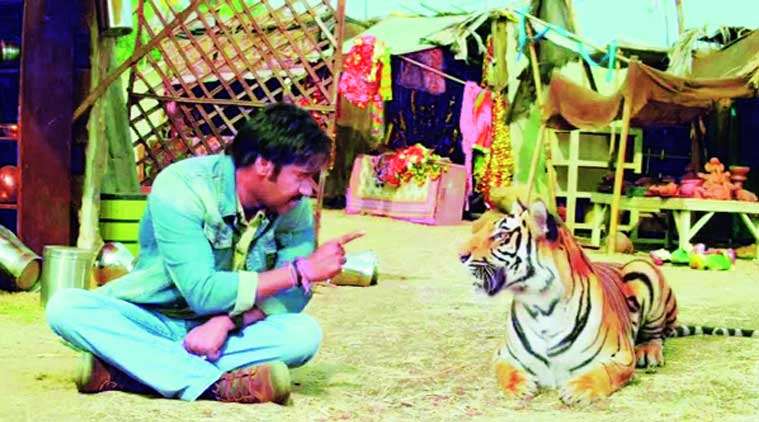- India
- International
Mark the territory
Filmmakers and the animal welfare board walk the tightrope when it comes to the use of animals in Hindi films
 The tiger in the remake of Himmatwala was created with CGI
The tiger in the remake of Himmatwala was created with CGI
In the song Paaji tussi such a pussy cat in the November-release Happy Ending — played along with the film’s end credits — Saif Ali Khan is seen dancing with a stuffed toy cat that he then flings away. The entire sequence with the animal lasts no more than five seconds. The film, when submitted to the Animal Welfare Board of India (AWBI) for a clearance before the censor certification, was rejected initially. The makers, director duo Raj Nidimoru and Krishna DK, were asked to furnish proof that the animal used in the song is a dummy.
“We had to scurry around, get the bill for the purchase of the toy and then submit it to the AWBI all over again,” recounts Nidimoru. At the end, the filmmakers were asked to run a ticker alongside the scene stating that the animal used in the scene is a toy.
The AWBI is an animal welfare organisation set up in 1962 under the Prevention of Cruelty to Animals Act. One of its functions is to ensure that animals aren’t exploited while shooting for films, commercials or television shows. For the same, the board has a fixed set of rules that filmmakers are supposed to follow. A large part of it includes guidelines for the welfare of animals — to ensure they are transported to the film set safely; allowed breaks between shoots, kept away from dangerous substances or equipment on the set and so on. It also seeks to ensure that animal cruelty isn’t glorified and the being isn’t exploited.
Therefore, it is mandatory that makers seek permission with details of the scene provided before shooting the sequence with animals. Also, a certified handler is to accompany the animal to the set and the minimum remuneration for the animal’s day of work must be paid by the producer.
However, most makers who have used an animal in their film — real or otherwise — will vouch that working with the AWBI isn’t easy. Some say the set of rules are “downright absurd” while others say the animal board can be as unpredictable as the censor officials. For instance, Finding Fanny was refused a certification multiple times — first on grounds that the AWBI wanted to make sure the “dead cat” used in the film is a toy, and then because they wanted an explanation for the slaughtered chickens that were carried into the house by Deepika Padukone’s character in the scene that introduces her in the movie. The makers furnished bills for both the toy and the chickens — purchased from a nearby slaughterhouse in Goa — but it took some convincing and a veterinarian’s certificate before the film was cleared.

Amit Sharma, a prominent ad film director who is now helming Tevar, adds that the list of animals banned from being shot also makes it difficult for makers. “Tigers, panthers, lions, bears, bulls, snakes and monkeys aren’t allowed to be exhibited or trained,” he points out. An ad film that he shot for a cellular network provider a few years ago needed him to shoot with monkeys. Unable to work around the rule in India, he had to shoot it in South Africa. He is glad that the sequence with a horse in Tevar has been cleared without any issue. In contrast, in Salman Khan’s Bajrangi Bhaijan, monkeys will be seen. This is possible because the film, set against the backdrop of Chandni Chowk, is being shot on location where animals such as pigeons and monkeys are part of the natural surrounding. However, the makers have had to provide an affidavit to the AWBI, informing them of the situation.
It is for such reasons that makers prefer to use special effects or dummies for the shoot as far as possible. Sajid Khan, for instance, has an animal as part of each of his films but these are created using computer graphics, such as in the climax sequence with a tiger in Himmatwala or the crocodile in Housefull 2. Filmmakers say the expenses involved in use of animals — a common breed of Labrador can cost a maker between Rs 5,000 and Rs 8,000 a day — also results in budget constraints.
AWBI officials, however, say that the drill is important, given how rampant animal cruelty is. Shankar, an authorised agent who liaises between the AWBI and filmmakers, seconds that. “Animals are supposed to be given a 40-minute break after shooting for an hour but this rarely happens,” he says. However, he adds that the rules need to be relooked in an Indian context.
mumbainewsline@expressindia.com
Apr 25: Latest News
- 01
- 02
- 03
- 04
- 05








































